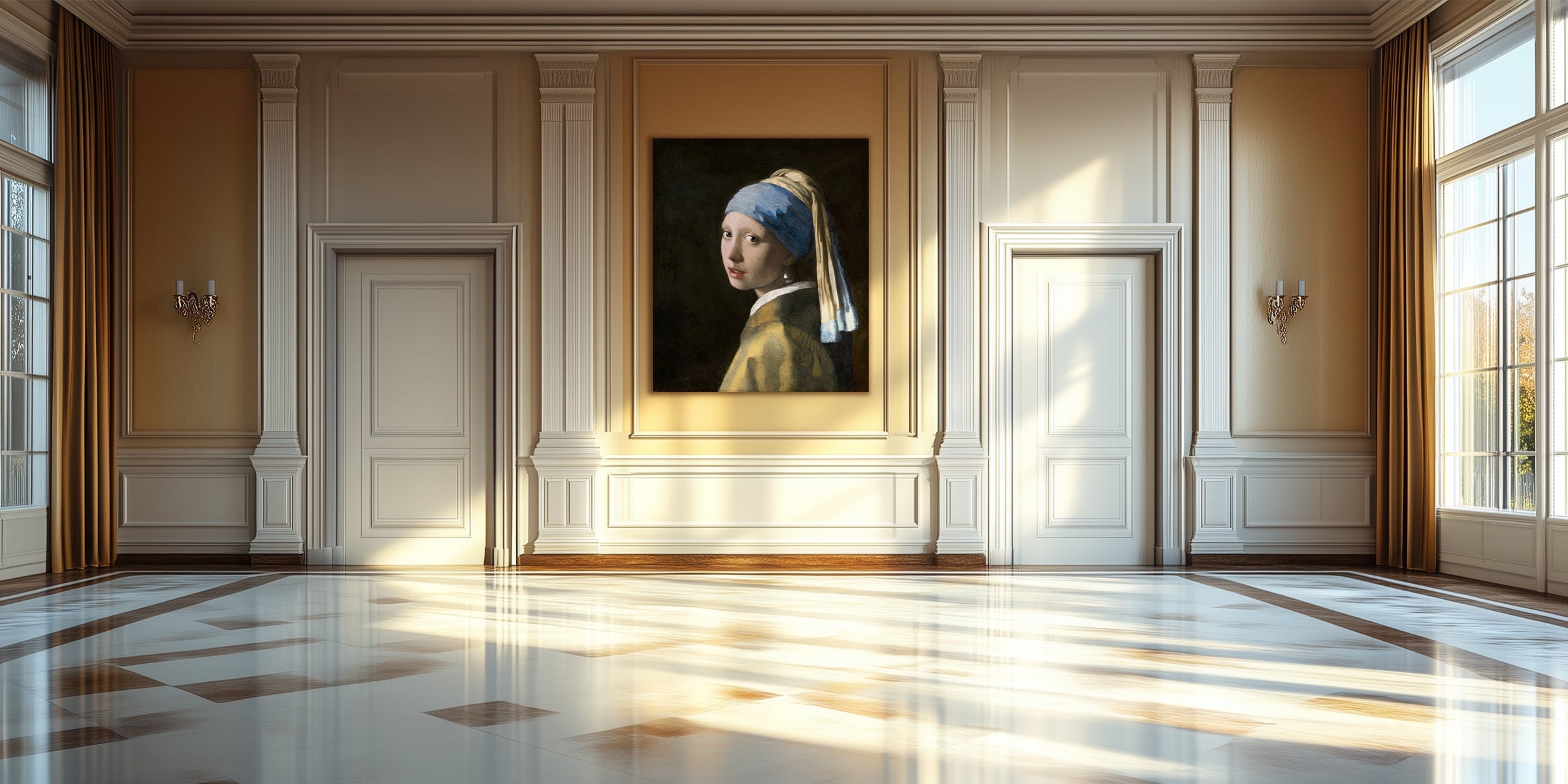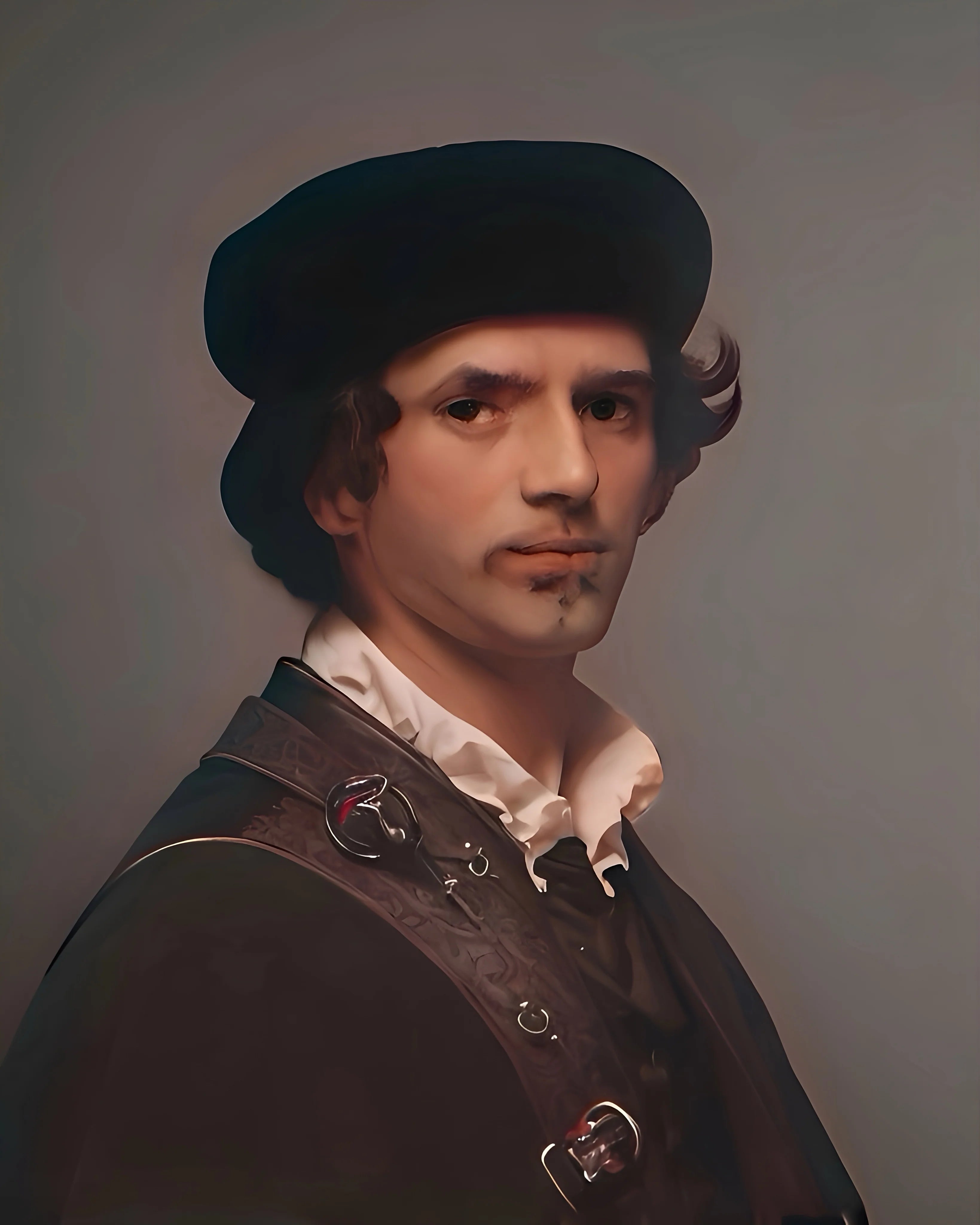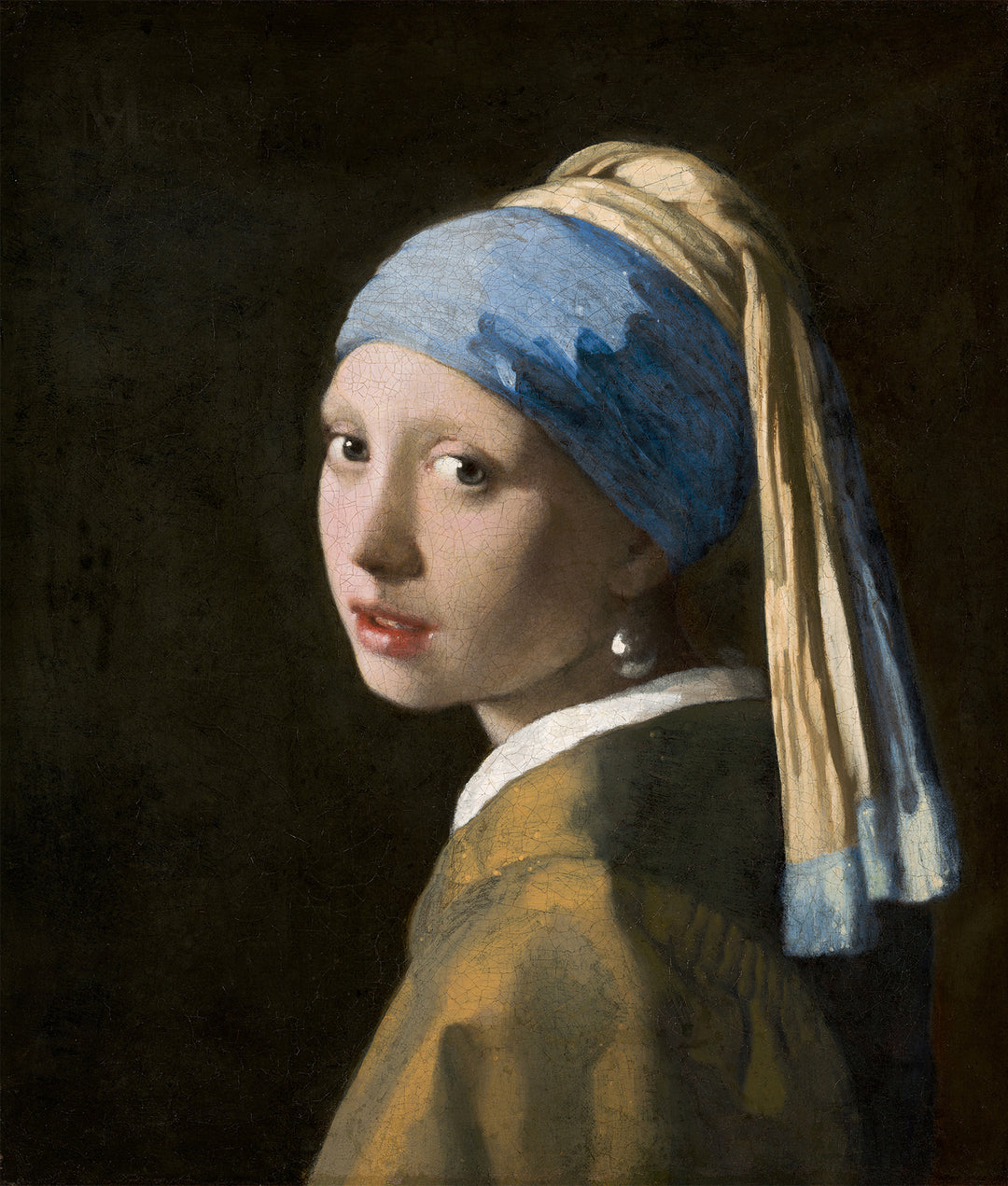
Johannes Vermeer

Johannes Vermeer, born in 1632 in Delft, Netherlands, is one of the most prominent painters of the Dutch Baroque. Although relatively little is known about his life, it has been confirmed that Vermeer was a member of the painter's guild in his city and spent his entire life in Delft. At the age of twenty, being of Calvinist religion, he married Catharina Bolnes in April 1653, a young and wealthy Catholic, at a time when it was very difficult in the Netherlands to have a confession other than that of the Reformed Church. His mother-in-law, who was already a widow, named Maria Thins, opposed the marriage presumably for this reason, but later agreed. It is not certainly known if he converted to Catholicism, but it is interesting to see that in his later years he painted what would be a Eucharist (mass), on the canvas called "Allegory of Faith," which in those years had to be celebrated inside family homes and in secret, and that he named his fifteen children with Catholic names.
Influenced by the work of the Utrecht Caravaggisti and the Flemish school of painting, Johannes developed a style characterized by his meticulous technique and masterful use of light, also being known for his interior scenes that capture everyday life with a surprising level of detail and realism. Works like "Girl with a Pearl Earring" and "The Milkmaid" are emblematic examples of his ability to depict textures, colors, and light effects. His use of natural lighting and balanced composition contribute to the sense of calm and serenity in his paintings.
The Baroque art movement, characterized by its drama, detail, and emotion, deeply influenced the Flemish painter. However, his style also anticipated elements of impressionism, especially in his handling of light and color. Among the artists he directly influenced are 19th-century French painters like Édouard Manet and Edgar Degas, who admired his ability to capture fleeting moments and the atmospheric quality of his interiors.
The master from Delft left a significant legacy despite his limited production of approximately thirty-five paintings. His influence endures in later art movements, including realism and impressionism. Modern artists continue to study and admire his work for its technical precision and the psychological depth of his characters. Additionally, the brilliance and composition have been a source of inspiration for many artists.
